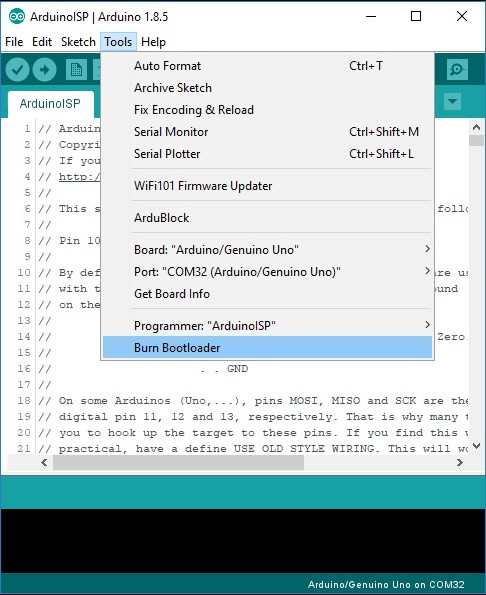

If no connection is detected, the execution is passed to the code of your sketch. The behavior described above happens thanks to a special piece of code that is executed at every reset of the microcontroller and that looks for a sketch to be uploaded from the serial/USB port using a specific protocol and speed.


Note: Boards from January 2018 have the new bootloader, while boards manufactured before that date have the old bootloader. Once it locates and runs your program, the Arduino continuously loops through the program and does so as long as the board has power. If the computer isn’t trying to upload code, it tells the chip to run the code that’s already stored in memory. This basically turns the IC off and back on again so the bootloader can start running again. That is why when you try to upload code, the Arduino IDE resets the chip. If it is, it grabs the program from the computer and uploads it into the IC’s memory (in a specific location so as not to overwrite the bootloader). First, it looks around to see if the computer is trying to program it. It is very similar to the BIOS that runs on your PC. hex file that runs when you turn on the board.
#ARDUINO BOOTLOADER HEX FILE SERIAL#
hex file on their AVR chips that allows you to program the board over the serial port, meaning all you need to program your Arduino is a USB cable. The Arduino has largely done away with these issues. hex files, and its not very beginner friendly. You need a special programmer and some fancy. What is a Bootloader?Ītmel ® AVRs are great little IC’s, but they can be a bit tricky to program. After having a search on the internet, it turned out that I had to put it on “Old Bootloader” to upload the file. After I had finished my code, I wanted to upload the code to the Arduino Nano with Arduino IDE. For this project I need an Arduino Nano V3.0 Clone. Recently I was working on a new project here.


 0 kommentar(er)
0 kommentar(er)
